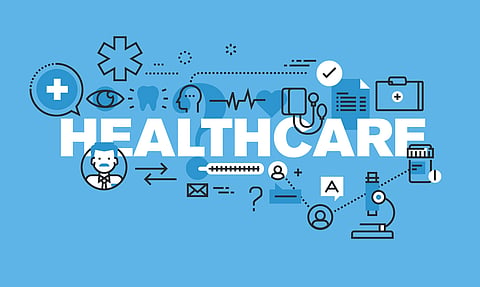
- Home
- Live Blog
- Breaking News
- Top Headlines
- Cities
- NE News
- Sentinel Media
- Sports
- Education
- Jobs

The reduction in out-of-pocket expenditure (OOPE) in healthcare is crucial for achieving the goal of universal health coverage. States increase their health budgets to create more public health infrastructure to make healthcare affordable to underprivileged sections of the society. Expansion of public healthcare infrastructure can significantly bring down OOPE. Rising prices of essential medicines, however, have negated the gain, which is a worrying development. The National Pharmaceutical Pricing Authority (NAPPA) granting its approval last month to a price hike of over 50% for essential medicines used to treat diseases like asthma, tuberculosis, mental health disorders, glaucoma, and thalassaemia has added to such worries. As the drug price regulating authority, NAPPA fixes ceiling prices of scheduled medicines, and all manufacturers of scheduled medicines must sell their medicines within this ceiling price. NAPPA increased the ceiling prices of 11 essential medicines and justified the move by stating that the hike was necessary to ensure their availability. The manufacturers approached NAPPA seeking approval for increasing the ceiling price of 77 medicines, citing the reasons of a rise in prices of ingredients, production costs, and currency exchange rates. The manufacturers expressed their inability to continue manufacturing these medicines if the ceiling prices are not increased. NAPPA invoked extraordinary power under the provision of the Drug (Prices Control) Order, 2013, to grant its approval to increase in prices of 11 scheduled formulations. Earlier in 2021 and in 2019, NAPPA invoked this provision to effect a hike in prices of essential medicines whereby the prices of 21 and 9 medicines, respectively, were increased by 50% “to ensure continued availability of essential drugs for the public,” which is indicative of continued rise in essential medicines. Most of these drugs are the first line of treatment; their availability at an affordable cost is of paramount importance to public health interventions in the country. As more than 50 percent of the households seek treatment in public healthcare institutions, the availability of treatment and medicines at an affordable cost is critical to achieving the goals under the National Health Mission. The expansion of healthcare infrastructure and affordable treatment to cover more people is dependent on the states playing proactive roles in the implementation of flagship healthcare programs: Pradhan Mantri-Ayushman Bharat Health Infrastructure Mission (PM-ABHIM), Ayushman Aarogya Mandir (erstwhile AB-HWC), and Pradhan Mantri Jan Arogya Yojana (PMJAY). Under PM-ABHIM, Sub-Health Centres (SHC) and Primary Health Centres (PHC) in rural and urban areas have been transformed into Ayushman Arogya Mandirs (AAMs). The objective of AAMs is to deliver the expanded range of comprehensive primary healthcare services that includes preventive, promotive, curative, palliative, and rehabilitative services encompassing reproductive and child care services, communicable diseases, non-communicable diseases, and all health issues, which are universal, free, and easily accessible. The AB-PMJAY provides health coverage of Rs. 5 lakh per family per year for secondary and tertiary care hospitalisation to the bottom 40% of India’s population. The scope of this scheme has expanded recently with the extension of this health coverage for all senior citizens of the age of 70 years and above, irrespective of their income. The Comptroller and Auditor General of India, which conducted a performance audit on PMJAY, observed that though the scheme is ambitious and well-intentioned, the implementation of the scheme needs improvement. The audit report revealed that in several states and union territories, there was a shortage of infrastructure, equipment, doctors, etc., and the available equipment was found nonfunctional. Besides, some of the empaneled health care providers (EHCP) neither fulfilled minimum criteria of support system and infrastructure nor conformed to the quality standards and criteria prescribed under the guidelines, it adds. The CAG also found that the availability of EHCPs per lakh beneficiaries is very low in some states. In Assam, it is only 3.4 EHCP per lakh beneficiaries, 3.6 in Maharashtra, 3.8 in Rajasthan, and 5 in Uttar Pradesh, which reveal a wide gap between the objective and implementation on the ground. Key features of the PMJAY include cashless and paperless treatment for the beneficiary, and at the time of hospital admission, no money is required. Besides, there is no cap on family size, age, or gender, and dependents of the registered beneficiary can avail themselves of benefits on his/her card coverage of three days of pre-hospitalisation and 15 days of post-hospitalisation expenses, including medicines, follow-up consultation, and diagnostics. Proper implementation of the scheme can significantly bring down OOPE and absorb shocks of a hike in medicine prices. The CAG finding is a wake-up call for the central and state governments to undertake a comprehensive review of the flagship schemes in healthcare so that the disparity in healthcare access is not widened. Improving public health is critical to increasing the productivity of the working population and freeing funds locked in public health expenditures for pushing the development agenda, building infrastructure, strengthening energy security, and boosting agricultural productivity. States need to prioritise OOPE reduction through better implementation of all schemes and projects for improving healthcare.